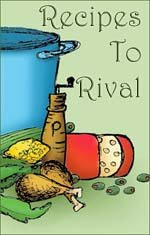
Parsnips (pastinaca sativum), root vegetables in the umbelliferae family, are vastly unknown and underappreciated in modern cooking. Although a close cousin to the more famous carrot, parsnips are largely ignored in the culinary world, and particularly by home cooks. Parsnips have a long and diverse history. Harold McGee, in his famed work, On Food and Cooking: The Science and Lore of the Kitchen (New York: Scribner, 1984), notes that parsnips were an important staple for ancient Greeks and Romans prior to the introduction of the potato. It was also used in
For those who require a little push in the right direction, here are some parsnip-centered recipes to try:
Parsnip Soup with Chestnuts and White Truffle Oil
Chef Cyril Renaud of Fleur de Sel –
Adapted by StarChefs
Yield: 4 Servings
1 large carrot, rough dice
1 large onion, rough dice
1 celery stalk, rough dice
2 sprigs thyme
2 quarts water
2 pounds parsnips, plus 2 parsnips for garnish, peeled
1 pound chestnuts, fresh or frozen (thawed to room temperature)
2 ounces crème fraiche
1 Tablespoon olive oil
Pinch of sugar
2 teaspoons butter
½ teaspoon white truffle oil
For soup:
In a large pot, combine carrot, onion, celery and thyme with water and bring to a boil. Simmer for 15 minutes and strain, reserving vegetable stock.
Slice 2 pounds parsnips into medium-sized pieces and steam with salt and pepper until tender. Blend parsnips with vegetable stock, 1cup at time until a smooth, soup-like consistency is achieved (may not require all of the vegetable stock). Add crème fraiche, salt, and pepper to taste.
For parsnip garnish:
Cut 2 peeled parsnips in half lengthwise and steam. Place parsnips on a baking pan and lightly brush with butter. Bake in a 400 F oven until lightly browned, about 10 minutes.
For chestnuts:
In a large pot, heat olive oil and then add chestnuts. Toss chestnuts in pan and add sugar and butter. Cook slowly until lightly browned. Add a little vegetable stock. Cover and steam for a few minutes until chestnuts are soft.
To serve:
Slice roasted parsnips into ¾-inch pieces and arrange on the bottom of a soup bowl. Ladle soup into bowl and arrange chestnuts in the middle. Drizzle a tiny amount of truffle oil into each bowl.
Parsnip Pancakes
Hans Röckenwagner of Röckenwagner -
Adapted by StarChefs
Yield: 6 pancakes
Ingredients:
1 1/2 large parsnips, peeled
1/2 cup all-purpose flour
1/2 small yellow onion, very finely chopped
1/2 teaspoon salt
1 egg, lightly beaten
2 Tablespoons olive oil
Freshly ground white pepper to taste
Bring a medium saucepan of lightly salted water to a boil. Add the parsnips and simmer for 10-12 minutes, or until almost tender. Drain the parsnips very well, pat dry with paper towels, and coarsely grate into a large bowl. Add the flour, onion, salt and white pepper and combine well. Stir in the egg and mix until a thick batter forms. Lightly flour your hands and form the mixture into six 3-inch patties. Heat a large nonstick skillet over medium-low heat. Add olive oil and parsnip pancakes. Cook slowly, turning them over when the bottom is golden and crisp. They will take about 4 to 5 minutes on each side.
Parsnip and Apple Puree
From: The Gourmet Cookook, Ruth Reichl, ed., New York (2004): Conde Nast Publications.
1 ½ pounds parsnips (about 6), peeled and coarsely chopped
2 tablespoons unsalted butter
1 cup finely chopped onion
2 Granny Smith apples, peeled, cored, and chopped
½ teaspoon salt
¼ teaspoon freshly ground black pepper
¼ cup sour cream, or to taste
⅛ ground allspice, or to taste
Combine parsnips with water to cover in a saucepan, bring to a simmer, cover, and simmer until very tender, about 20 minutes.
Maple Glazed Parsnips
From: The Joy of Cooking, Irma S. Rombauer, Marion Rombauer Becker and Ethan Becker, New York (2007): Scribner
1 ½ pounds parsnips (about 6), peeled
2 cups water
3 tablespoons butter
2 teaspoons sugar
1 teaspoon salt
¼ teaspoon ground white pepper
3 tablespoons maple syrup
⅛ teaspoon nutmeg, or to taste
Trim the parsnips at the stem ends. Cit the parsnips cross-wise in half and cut the large halves lengthwise down the middle. If the core in the large pieces is wider than ½ or woody looking and very dark yellow, pry it out with the tip of a knife; this will not be necessary unless the parsnips are large and over mature. If not cooking immediately, cover the parsnips with ice water to prevent discoloration; do not let stand for more than 1 hour.



3 comments:
have you made any of these yet? i want to know which one to try first :)
Mmmm, I LOVE parsnips! My new thing is the jicama. Winter vegetables are so scrumptious.
I have a vegan/vegetarian shepherd's pie dish blogged somewhere in October or September; it calls for parsnips--check it out!
oooo! i just discovered these myself. they make soup taste SO amazing. i'm in love.
Post a Comment